Posted on August 3rd, 2022 by Mary Lord
 In this NGSS-aligned activity, 2nd graders draw on their knowledge of Earth science to follow the engineering design process and investigate solutions for protecting sandcastles from wind and water damage. They make hypotheses, measure and record changes, and support their results using evidence. Suitable for students in grades 1-3.
In this NGSS-aligned activity, 2nd graders draw on their knowledge of Earth science to follow the engineering design process and investigate solutions for protecting sandcastles from wind and water damage. They make hypotheses, measure and record changes, and support their results using evidence. Suitable for students in grades 1-3.
Read More
Filed under: Class Activities, Grades K-5, Grades K-5, Lesson Plans | Comments Off on Sandcastle Investigations
Tags: construction, data, Earth Science, Engineering Design, erosion, materials, measurement, NGSS, sandcastle construction, sandcastle engineering, structural and civil engineering
Posted on December 9th, 2019 by Mary Lord
 Students in grades 6 to 11 explore the practical, scientific, ethical, and environmental issues that emerge in creating “smart” buildings that meld environmentally responsible design with cutting-edge computing technology known as the Internet of Things (IoT). Working in teams, they design and perhaps later implement smart-building solutions to make their school a better place to inhabit.
Students in grades 6 to 11 explore the practical, scientific, ethical, and environmental issues that emerge in creating “smart” buildings that meld environmentally responsible design with cutting-edge computing technology known as the Internet of Things (IoT). Working in teams, they design and perhaps later implement smart-building solutions to make their school a better place to inhabit.
Read More
Filed under: Class Activities, Grades 6-8, Grades 9-12, Lesson Plans | Comments Off on Smart School Building
Tags: careers, civil and environmental engineering, cool, electrical and computer engineering, environment, heat, IEEE, intelligent infrastructure, Internet of Things, LED, light, NGSS, sensors, smart buildings, teachengineering, TryComputing
Posted on October 21st, 2019 by ASEE
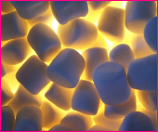 This simple catapult activity for students in grades 4 – 8 teaches them how energy is transferred when a plastic spoon is pulled back, then released, rocketing its payload — a single marshmallow.
This simple catapult activity for students in grades 4 – 8 teaches them how energy is transferred when a plastic spoon is pulled back, then released, rocketing its payload — a single marshmallow.
Read More
Filed under: Class Activities, Grades 6-8, Grades K-5, Grades K-5, Lesson Plans | Comments Off on Activity: Catapult Marshmallow Launch
Tags: catapult, Class Activities, Energy, forces and motion, Fun & Games, Grades 4 - 8, Grades K-5, Newton's Laws, NGSS, Physical Science, Physics, trebuchet
Posted on May 20th, 2019 by Mary Lord
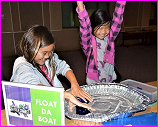 Pre-service and in-service middle school science teachers are sought for a graduate research project aimed at developing an assessment instrument to improve the teaching of engineering practices and incorporation of design in science classrooms, as outlined in the Next Generation Science Standards and other state science-education reforms.
Pre-service and in-service middle school science teachers are sought for a graduate research project aimed at developing an assessment instrument to improve the teaching of engineering practices and incorporation of design in science classrooms, as outlined in the Next Generation Science Standards and other state science-education reforms.
Read More
Filed under: For Teachers, Grades 6-8, K-12 Education News, K-12 Outreach Programs, Special Features | Comments Off on MS STEM Teachers Needed for NGSS Study
Tags: assessment instrument, NGSS, Professional Development, research on K-12 engineering education, Research on Learning, research on STEM teaching, Teacher Training
Posted on January 11th, 2019 by Mary Lord
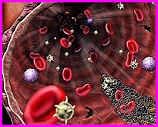 In this NGSS-aligned activity, high school students work as biomedical engineers to find liquid solutions that can clear away polyvinyl acetate polymer “blood clots” in model arteries made of clear, flexible tubing. Teams create samples of the “blood clot” polymer to discover the concentration of the model clot and then test a variety of liquids to determine which most effectively breaks it down. Students learn the importance of the testing phase in the engineering design process, because they are only given one chance to present the team’s solution and apply it to the model blood clot.
In this NGSS-aligned activity, high school students work as biomedical engineers to find liquid solutions that can clear away polyvinyl acetate polymer “blood clots” in model arteries made of clear, flexible tubing. Teams create samples of the “blood clot” polymer to discover the concentration of the model clot and then test a variety of liquids to determine which most effectively breaks it down. Students learn the importance of the testing phase in the engineering design process, because they are only given one chance to present the team’s solution and apply it to the model blood clot.
Read More
Filed under: Class Activities, Grades 9-12, Lesson Plans | Comments Off on Let the Blood Flow: Biomedical Artery Unclogging Experiment
Tags: arteries, Biomedical Engineering, Chemistry, circulatory system, Class Activities, Grades 9-12, heart, Lesson Plan, NGSS, stent, TeachEngineeirng, UCLA SEEK GK-12 program, valves
Posted on January 10th, 2019 by Mary Lord
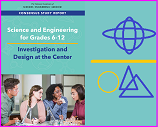 A major new consensus study from the National Academies of Sciences, Engineering, and Medicine, underscores the vital role of teachers in creating the hands-on, multidisciplinary STEM education for every student envisioned by the Next Generation Science Standards. The report also calls for more creation and sharing of free educational materials so teachers no longer have to spend hours each week searching for curriculum.
A major new consensus study from the National Academies of Sciences, Engineering, and Medicine, underscores the vital role of teachers in creating the hands-on, multidisciplinary STEM education for every student envisioned by the Next Generation Science Standards. The report also calls for more creation and sharing of free educational materials so teachers no longer have to spend hours each week searching for curriculum.
Read More
Filed under: For Teachers, Grades 6-8, Grades 9-12, K-12 Education News, Special Features | Comments Off on STEM Ed. Report: Teachers Key to Reform
Tags: Education Policy, Engineering Design, National Academies of Sciences, NGSS, Public Policy, Science and Engineering for Grades 6-12: Investigation and Design at the Center, STEM education, STEM equity
Posted on December 16th, 2018 by Mary Lord
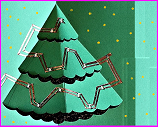 Students in grades 6 to 12 learn simple circuitry by creating light-up paper cards using only copper tape, a coin cell battery, a light-emitting diode (LED), and small electronic components. An artistic way to teach the basics of how circuits function—no soldering required!
Students in grades 6 to 12 learn simple circuitry by creating light-up paper cards using only copper tape, a coin cell battery, a light-emitting diode (LED), and small electronic components. An artistic way to teach the basics of how circuits function—no soldering required!
Read More
Filed under: Class Activities, Grades 6-8, Grades 9-12, Lesson Plans | Comments Off on Paper Circuits Greeting Cards
Tags: Class Activities, electricity, Grades 6-8, Grades 9-12, LEDs, Lesson Plan, NGSS, paper circuits greeting cards, Physics, STEAM, Technology
Posted on September 28th, 2018 by Mary Lord
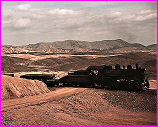 Middle school students learn about mineral properties and calculate the costs, benefits, and densities in this engineering-driven earth science unit based on the real-world design challenge of salvaging cargo following a train derailment. Students also will strengthen communication skills by creating a presentation to explain their process and justify their decisions to a “client.”
Middle school students learn about mineral properties and calculate the costs, benefits, and densities in this engineering-driven earth science unit based on the real-world design challenge of salvaging cargo following a train derailment. Students also will strengthen communication skills by creating a presentation to explain their process and justify their decisions to a “client.”
Read More
Filed under: Grades 6-8, Grades K-5, K-12 Outreach Programs, Lesson Plans | Comments Off on Lesson: Mineral Mayhem
Tags: Class Activities, Common Core mathematics, Earth Science, Engineering Design, entrepreneurship, Grades 6-8, Grades K-5, Industrial engineering, Lesson Plan, Mathematics, mineral, NGSS, Purdue University engineering education outreach, scatterplot, STEM integration
Posted on August 20th, 2018 by Mary Lord
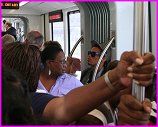 Students in grades 9 to 12 analyze real-world traffic data to evaluate the efficiency of a section of a public transit system and suggest design improvements. They then evaluate whether the changes make positive impacts on the system’s performance. Includes link to a California Academy of Sciences challenge on designing more energy-efficient, greener buses.
Students in grades 9 to 12 analyze real-world traffic data to evaluate the efficiency of a section of a public transit system and suggest design improvements. They then evaluate whether the changes make positive impacts on the system’s performance. Includes link to a California Academy of Sciences challenge on designing more energy-efficient, greener buses.
Read More
Filed under: Class Activities, Grades 9-12, K-12 Outreach Programs, Lesson Plans | Comments Off on Mass Transit Living Lab
Tags: Class Activities, data, FasTracks, Grades 9-12, graphs, Lesson Plan, mass transit, NGSS, route, Systems Engineering, traffic engineering, transportation engineering, urban planning
 In this NGSS-aligned activity, 2nd graders draw on their knowledge of Earth science to follow the engineering design process and investigate solutions for protecting sandcastles from wind and water damage. They make hypotheses, measure and record changes, and support their results using evidence. Suitable for students in grades 1-3.
In this NGSS-aligned activity, 2nd graders draw on their knowledge of Earth science to follow the engineering design process and investigate solutions for protecting sandcastles from wind and water damage. They make hypotheses, measure and record changes, and support their results using evidence. Suitable for students in grades 1-3.








 Students in grades 6 to 11 explore the practical, scientific, ethical, and environmental issues that emerge in creating “smart” buildings that meld environmentally responsible design with cutting-edge computing technology known as the Internet of Things (IoT). Working in teams, they design and perhaps later implement smart-building solutions to make their school a better place to inhabit.
Students in grades 6 to 11 explore the practical, scientific, ethical, and environmental issues that emerge in creating “smart” buildings that meld environmentally responsible design with cutting-edge computing technology known as the Internet of Things (IoT). Working in teams, they design and perhaps later implement smart-building solutions to make their school a better place to inhabit. This simple catapult activity for students in grades 4 – 8 teaches them how energy is transferred when a plastic spoon is pulled back, then released, rocketing its payload — a single marshmallow.
This simple catapult activity for students in grades 4 – 8 teaches them how energy is transferred when a plastic spoon is pulled back, then released, rocketing its payload — a single marshmallow. Pre-service and in-service middle school science teachers are sought for a graduate research project aimed at developing an assessment instrument to improve the teaching of engineering practices and incorporation of design in science classrooms, as outlined in the Next Generation Science Standards and other state science-education reforms.
Pre-service and in-service middle school science teachers are sought for a graduate research project aimed at developing an assessment instrument to improve the teaching of engineering practices and incorporation of design in science classrooms, as outlined in the Next Generation Science Standards and other state science-education reforms.  In this NGSS-aligned activity, high school students work as biomedical engineers to find liquid solutions that can clear away polyvinyl acetate polymer “blood clots” in model arteries made of clear, flexible tubing. Teams create samples of the “blood clot” polymer to discover the concentration of the model clot and then test a variety of liquids to determine which most effectively breaks it down. Students learn the importance of the testing phase in the engineering design process, because they are only given one chance to present the team’s solution and apply it to the model blood clot.
In this NGSS-aligned activity, high school students work as biomedical engineers to find liquid solutions that can clear away polyvinyl acetate polymer “blood clots” in model arteries made of clear, flexible tubing. Teams create samples of the “blood clot” polymer to discover the concentration of the model clot and then test a variety of liquids to determine which most effectively breaks it down. Students learn the importance of the testing phase in the engineering design process, because they are only given one chance to present the team’s solution and apply it to the model blood clot. A major new consensus study from the National Academies of Sciences, Engineering, and Medicine, underscores the vital role of teachers in creating the hands-on, multidisciplinary STEM education for every student envisioned by the Next Generation Science Standards. The report also calls for more creation and sharing of free educational materials so teachers no longer have to spend hours each week searching for curriculum.
A major new consensus study from the National Academies of Sciences, Engineering, and Medicine, underscores the vital role of teachers in creating the hands-on, multidisciplinary STEM education for every student envisioned by the Next Generation Science Standards. The report also calls for more creation and sharing of free educational materials so teachers no longer have to spend hours each week searching for curriculum. Students in grades 6 to 12 learn simple circuitry by creating light-up paper cards using only copper tape, a coin cell battery, a light-emitting diode (LED), and small electronic components. An artistic way to teach the basics of how circuits function—no soldering required!
Students in grades 6 to 12 learn simple circuitry by creating light-up paper cards using only copper tape, a coin cell battery, a light-emitting diode (LED), and small electronic components. An artistic way to teach the basics of how circuits function—no soldering required!  Middle school students learn about mineral properties and calculate the costs, benefits, and densities in this engineering-driven earth science unit based on the real-world design challenge of salvaging cargo following a train derailment. Students also will strengthen communication skills by creating a presentation to explain their process and justify their decisions to a “client.”
Middle school students learn about mineral properties and calculate the costs, benefits, and densities in this engineering-driven earth science unit based on the real-world design challenge of salvaging cargo following a train derailment. Students also will strengthen communication skills by creating a presentation to explain their process and justify their decisions to a “client.”  Students in grades 9 to 12 analyze real-world traffic data to evaluate the efficiency of a section of a public transit system and suggest design improvements. They then evaluate whether the changes make positive impacts on the system’s performance. Includes link to a California Academy of Sciences challenge on designing more energy-efficient, greener buses.
Students in grades 9 to 12 analyze real-world traffic data to evaluate the efficiency of a section of a public transit system and suggest design improvements. They then evaluate whether the changes make positive impacts on the system’s performance. Includes link to a California Academy of Sciences challenge on designing more energy-efficient, greener buses.